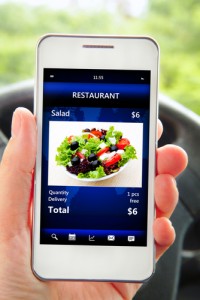Filling the gap between mobile and knowing what to do with it
 Many businesses as they prepare for a mobile future currently have a courting relationship with mobile devices as they work out whether they are a good fit and crucially what to do together.
Many businesses as they prepare for a mobile future currently have a courting relationship with mobile devices as they work out whether they are a good fit and crucially what to do together.
The practical in-house business benefits of mobile, for stock taking or on the spot ordering for example, are easier to recognise than the advantages that customer facing mobile apps can offer to consumers.
Now the pressure is on for companies to find the right opportunities to fill the gap. Josh Bernoff, research firm Forrester’s senior vice-president of idea development, talks of ‘mobile moments’ as the way to approach this channel. He says: “A mobile moment is a point in time and space where a shopper pulls out their mobile device for a particular use. You can either be there or not be there”.
Often, a mobile acts as an immediate resource for a customer to check prices, find information through QR codes or a make purchase with, however this relationship is developing further as loyalty schemes are also moving in. “Most people don’t just want to buys things in a mobile app. The correct focus for a retailer in mobile is to influence sales in other environments,” Josh Bernoff adds.
Retail Week’s ‘Fashion retail 2014’ report claims that 50% of retail respondents say maintaining brand loyalty is their biggest challenge, particularly in a saturated market. Providing a quality multi-channel and investment in mobile are listed as the top two priorities, so perhaps mobile can help to fill this gap and raise consumer confidence.
For example, health and beauty retailer Boots is mobilising its Advantage loyalty scheme with an app that will give Advantage card holders access to their personalised offers via their mobile device. The app also enables customers to scan product barcodes to find more information as well as customer ratings and reviews, and it includes a news and events feature.
The reasoning behind the app was partially data driven following research by Boots that found a third of customers regularly forget to put Boots’ existing paper coupons in their purse and therefore miss out on the offers, and that also 70% of customers research online before purchasing. Ruth Spencer, director of Loyalty and multichannel at Boots UK says the Boots App makes missing out on offers a thing of the past, “ensuring our customers always have access to the offers they want the most, when they want them…with customers telling us they want more offers, more often now they not only have a greater choice of personalised offers but the flexibility to choose an offer while they are in the queue and it will be ready and waiting on their Boots Advantage Card by the time they get to the till.”
Sarah Vizard a technology expert and reporter at Marketing week comments: “It’s a smart move from Boots. One that gets rid of one of the main gripes people have with loyalty programmes. Plus it gets around having to update tills or add in new point-of-sale that can read mobiles, a costly exercise when you run as many stores as Boots does”.
In addition to information, payment and loyalty features other mobile apps on the market are also exploring business location finding with directions to nearby premises, live ‘just in’ product alerts and queue based video downloads for entertainment. Krispy Kreme’s latest app was so successful that it replaced the company’s traditional media marketing. The doughnut retailer uses a neon ‘hot doughnuts now’ light outside its stores to draw customers in for freshly cooked, hot doughnuts. Following the success of the physical light, it created an app that runs a virtual light to alert customers who are nearby, who apparently come running.
Meanwhile Starbucks coffee shop has opted for a three-tiered approach. It directs coffee fans searching for one of its cafes to its nearest one by pin-pointing their location, then while they are waiting in line to be served it entertains them with access to free music video downloads from iTunes and finally makes sure the transactions is as fast as possible using its own bespoke payment app. Starbucks reports that one in every ten transactions now goes through mobile. “All of Starbucks’ digital efforts provide the one thing that’s hardest to get in this digital age – insight into your consumers and what they want”, says Forrester’s analysts.


No comments yet.